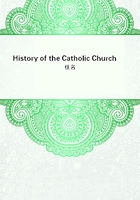
第330章
The whole army of government officials, Protestant ministers, and spies were set to work to discover what persons had left Ireland to go abroad for education, to seize all priests found entering the country, and to take measures against those in the country who neglected to register themselves as they had been commanded to do. One hundred and eighty-nine priests were registered in Ulster, three hundred and fifty-two in Leinster, two hundred and eighty-nine in Munster, and two hundred and fifty-nine in Connaught.[13] Against the laity, too, the full penalties of the law were enforced, but yet it is satisfactory to note that in the year 1703 only four certificates of conformity were filed, sixteen in 1704, three in 1705, five in 1706, two in 1707, and seven in 1708.[14] It was clear, therefore, that if the Catholic religion was to be suppressed recourse must be had to even more extreme measures. In 1709 an act was passed ordering all priests to take the Oath of Abjuration before the 25th March 1710, unless they wished to incur all the pains and penalties levelled against the regular clergy.[15] By the Oath of Abjuration they were supposed to declare that the Pretender "hath not any right or title whatsoever to the crown of this realm or any other the dominions thereunto belonging," that they would uphold the Protestant succession, and that they made this declaration "heartily, willingly, and truly." Rewards were laid down for the encouragement of informers, ā50 being allowed for discovering an archbishop, bishop, vicar, or any person exercising foreign jurisdiction, ā20 for the discovery of a regular or a non-registered secular priest, and ā10 for the discovery of a Popish schoolmaster. To facilitate the arrest of the clergy it was provided that any two justices of the peace might summon Catholics before them and interrogate them under oath when and where they heard Mass last, what priest officiated, and who were present at the ceremony. Failure to give the required information about Mass, priests, or school-masters was to be punished by imprisonment for twelve months or until the guilty person paid a fine of ā20. A pension of ā20 a year, increased afterwards to ā40, was provided for those priests who left the Catholic Church.[16] As regards lay Catholics further measures were taken to encourage the children of Catholic parents to become Protestant by ordaining that in such a case the Court of Chancery could interfere and dictate to the father what provision he must make for such children. Similarly wives of Catholics were encouraged to submit by the promise that the Court of Chancery would interfere to safeguard their interests. Stringent regulations were made to ensure that all pretended converts engaged in the professions and in public offices should rear their children in the Protestant faith, and to ensure that no Catholic could teach school publicly or privately or even act as usher in a Protestant school.
The priests, though not unwilling to take a simple oath of allegiance, refused as a body to take the Oath of Abjuration, and immediately they became liable to all the punishments directed against the bishops and regulars. Wholesale arrests took place over the country; spies were employed to track them down; the men who had gone security for their good behaviour in 1704 were commanded to bring them in under threat of having the recognisances estreated; judges were ordered to make inquiries at the assizes; and Catholics were called upon to discover on their clergy by giving information about the priests who celebrated Mass. The search was carried on even more vigorously in Munster and Connaught than in Ulster and Leinster, so that during the remainder of the reign of Queen Anne no priest in any part of Ireland could officiate publicly with safety.[17] Petitions were drawn up and forwarded to all the Catholic sovereigns of Europe, asking them to intercede for their co-religionists in Ireland, but though many of them did instruct their representatives in London to take action, their appeals and remonstrances produced very little effect.[18] At the same time the laws in regard to Catholic property, and Catholic education were enforced with great severity, particular care being taken that only Protestants should be recognised as guardians of Catholic minors or orphans, and that the guardians should rear the children as Protestants. Against the law, the wishes or even the last testament of a dying father were of no avail.[19]
During the reign of George I. (1714-27) there was very little improvement in the condition of the Catholics of Ireland. Indeed, in regard to legal enactments their condition was rendered much worse.
They were obliged to pay double the contribution of their Protestant neighbours for the support of the militia; their horses could be seized for the use of the militia; they were prevented from acting as petty constables or from having any voice in determining the amount to be levied off them for the building and repairing of Protestant churches or for the maintenance of Protestant worship. In 1719 a new and more violent measure was passed by the House of Commons, according to one of the clauses of which all unregistered priests caught in Ireland were to be branded with a red-hot iron upon the cheek. The Irish privy council changed this penalty into mutilation, but when the bill was sent to England for approval the original clause was restored. For purely technical reasons the bill never became law.[20]